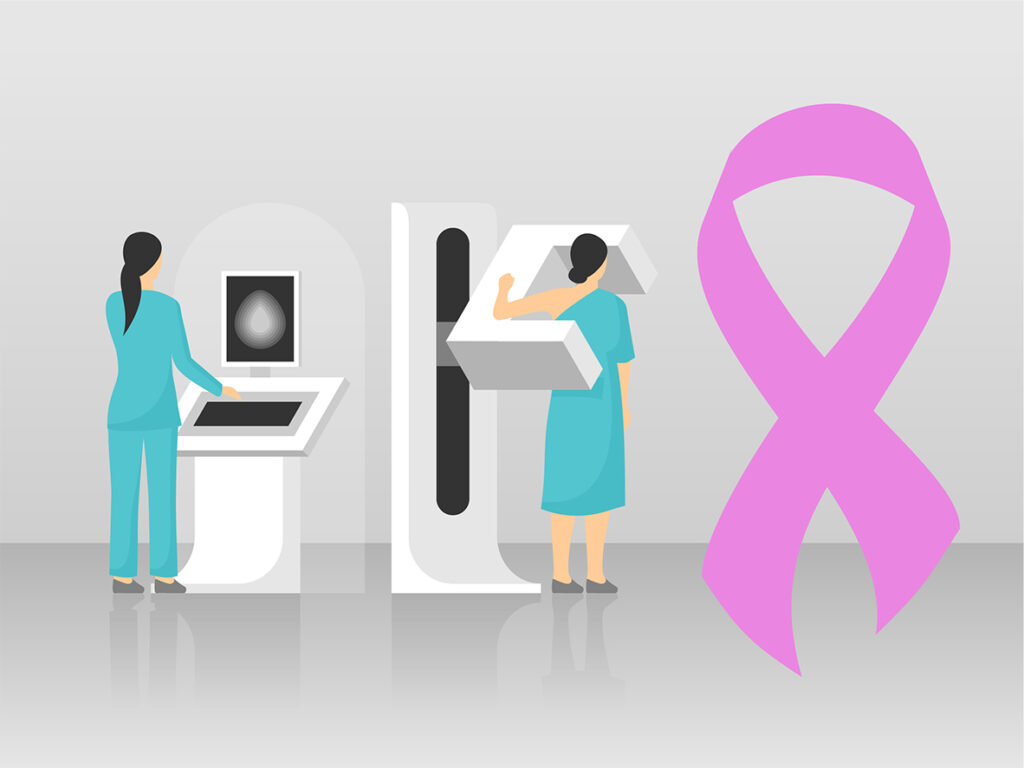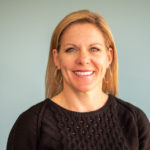By Cari Frank, MBA
It was the coldest shower I had taken in a long time, and it ended up saving my life. I was spending Christmas 2021 in Belize with my family, and our hotel had no hot water. A minor thing, given that I was in paradise. One day, in my rush to take the shortest cold shower possible, I brushed up against my breast and felt a lump. I tried to file away the anxiety, not wanting to let it ruin our vacation, and scheduled a mammogram as soon as I got back.
I wasn’t super worried. The mammogram I had the year before came back “normal” and I have no family history of breast cancer. When I got my test results in the mail, it said the same thing it has every year – no concerning findings, dense breast tissue, and a recommendation to have a follow-up ultrasound. Historically, I’ve always been skeptical of getting the follow up ultrasound thinking it was unnecessary and costly.
This time was different, though. My “little friend,” as I had started calling it, was still very prominent. For my own sanity, I scheduled the follow-up ultrasound. My doctor was surprised to find that while visible through the ultrasound and physical touch, the lump was completely undetectable in the mammogram. She told me this happens in about 20% of women, and an ultrasound is the only way to detect issues.

Fast forward to April 1, 2022, post-biopsy, when my doctor called to let me know that “my little friend” was cancerous, and I needed to start chemotherapy immediately.
Wait, what?! I immediately thought it was some horrible April Fool’s Day prank. I’m rarely sick, have never had any major health problems, and I work hard to live a healthy, active lifestyle. How could I have breast cancer?
Since then it’s been a whirlwind of tests, visits with radiologists, oncologists, surgeons, and other providers, and five very challenging months of chemotherapy. I’m currently scheduled for the last stage of my journey in early November – a double mastectomy, which I’m electing to do so there will be very little chance of the cancer returning.
The Big Picture
This has been the hardest thing I’ve ever experienced, yet through it all I’ve remained extremely grateful. I know through my health equity work at CIVHC, including our recent Data Dive on disparities in Breast Cancer Screening rates, that I’m very lucky. In my case, “luck” is very much a result of the fact that I’ve grown up as a white woman, and the color of my skin and social status have resulted in advantages and privileges that not everyone is afforded. This became clear in different ways as I interacted with the health care system.
- Early Detection. I trust that while the health care system is certainly flawed, providers are ultimately trying to do the right thing and improve the lives of their patients. People of color are not always given the same respect and have historically been treated in ways that make them skeptical of the system and reluctant to access care. I didn’t hesitate to get a mammogram when I felt a lump, and when it came back negative, I got more testing right away. What if I hadn’t found this when I did, didn’t get immediate care, and it had spread?
- Employment & Flexibility. I am fortunate to have a salaried job, the ability to flex my time, and an employer who puts people first and has been supportive with my needs from the very beginning. I have an incredible team of coworkers who have filled in for me and stepped up to the plate when I was stuck at the hospital for four hours every week while getting pumped with poison (and feeling horrible on other days). What if I had an hourly job and couldn’t take time off without sacrificing pay or fear of losing my job altogether?
- Health Coverage and Savings. Historically, I’ve rarely used my health insurance and have had the opportunity to put money away in a Health Savings Account through my employer-sponsored health coverage. I was able to use funds in my HSA to cover my co-pays and deductible. What if I didn’t have insurance or money to cover the cost of my treatment?
- Access to Care. The cancer center I’m going to is a five-minute drive from my house. This has significantly reduced the time burden for the numerous appointments I’ve had over the last year. What if I lived in a rural area without a cancer center for miles or didn’t have transportation to access the care I needed?
- Communication. I understand how to navigate the health system and trust that doctors will listen to me, take me seriously, and treat me as a partner in my care. I have a smartphone and access to the internet so I’ve been able to navigate my patient portal where all of my records are being stored and I can keep track of my appointments and ask questions. English is my primary language, and as such it’s been easy to communicate with my providers. What if I couldn’t communicate with my providers and didn’t feel I had a voice in my own care?
- Support. I knew before any of this happened that I had the most amazing support system in terms of family, friends, and coworkers. I can’t tell you the number of people who have sent me cards or thoughtful gifts, signed up for meal trains, and made me feel loved and supported over these past five months. My partner and mom helped me get around town and accompanied me to my appointments and treatments. What if I were going through this all alone and had no support system?
While my journey hasn’t been challenge-free, I am certain it has been easier for me than for many others. This experience has ignited a deep passion within me to continue advancing CIVHC’s health equity work in Colorado and across the nation. More than ever, I firmly believe that the color of your skin, social status, and neighborhood shouldn’t be determining factors in whether you are afforded the same opportunity to be healthy and thrive. Good health is something everyone deserves, not just those with a little luck on their side.
Additional Resources
- Data Dive: Breast Cancer Screening
- Community Dashboard (includes statewide and county level
breast cancer screening rates)


